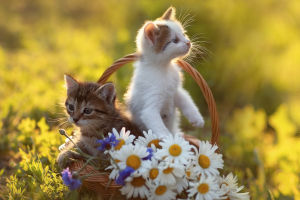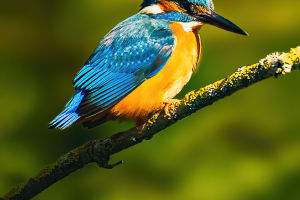Cats have captured the hearts of countless pet lovers with their diverse patterns and colors.
So, what are the types of cat patterns, how are they formed, and what functions do they serve?
Types of Cat Patterns
Cat patterns come in many varieties, mainly including the following:
1. Tabby: This pattern is the most common, resembling tiger stripes, and can come in various forms such as stripes, spots, swirls, and more. Depending on the shape of the pattern, tabby patterns can be further divided into classic tabby, mackerel tabby, spotted tabby, and ticked tabby.
2. Solid: Solid cats have a uniform fur color without any patterns. These cats may be black, white, blue (gray), red (orange), or other colors.
3. Bicolor: This pattern refers to a cat's coat consisting of two colors, usually a combination of white and another color. For example, the famous "tuxedo cat" is a black and white bicolor cat.
4. Calico and Tortoiseshell: Calico cats usually have a combination of black, orange, and white, while tortoiseshell cats have a mix of black and orange. This type of pattern mainly appears in female cats.
5. Pointed: Pointed cats have darker colors on their face, ears, limbs, and tails, while the rest of their body is lighter. This pattern is usually seen in breeds such as Siamese and Persian cats.
The Formation of Cat Patterns
A cat's pattern is determined by genes. The combination of different genes determines the color and pattern of a cat's coat. For example, the tabby gene is dominant, while the solid color gene is recessive. Therefore, if a cat carries the gene for tabby stripes, it is likely to display tabby patterns.
Additionally, cat patterns are influenced by other factors. For example, the patterns of tortoiseshell and calico cats are related to the X chromosome. Female cats have two X chromosomes, and if the color gene on each X chromosome is different, the cat will show tortoiseshell or tricolor patterns. Male cats only have one X chromosome, so tortoiseshell or tricolor patterns are rarely seen in males.
The expression of these genes can also be influenced by temperature. For instance, the pointed pattern in Siamese cats is a result of a temperature-sensitive enzyme that causes the fur to be darker in cooler areas of the body and lighter in warmer areas.
Functions of Cat Patterns
Cat patterns are not just for beauty; they also have important functions in nature.
1. Camouflage: Cat patterns help them hide in the wild and avoid attacks from predators. For example, tabby cats can blend well into the surrounding environment in forests, making it easier for them to hunt and avoid enemies.
2. Social Identification: Cats recognize each other through their patterns. Different patterns and color combinations give each cat a unique appearance, helping establish social relationships among cats. This can be crucial in colonies where individual identification is important.
3. Temperature Regulation: Certain patterns, such as pointed patterns, are temperature-dependent. In colder environments, the fur on the extremities of these cats becomes darker, helping them maintain their body temperature. This adaptation is particularly noticeable in breeds like the Siamese and Himalayan.
The Cultural Significance of Cat Patterns
Cat patterns also have rich symbolic meanings in different cultures. In some cultures, tricolor cats are considered symbols of good luck, while black cats are often seen as omens of bad luck. Unique patterns, such as those of tortoiseshells and pointed cats, are often associated with mystery and uniqueness.
For instance, in Japanese culture, the Maneki-Neko (beckoning cat), which is often depicted with calico patterns, is believed to bring good fortune and prosperity. Conversely, in Western cultures, black cats have historically been associated with witchcraft and superstition, although in modern times, this view is gradually changing.
Cat patterns are not only colorful and varied but also full of biological and cultural significance. By understanding the types, formation mechanisms, and functions of these patterns, we can better appreciate the beauty of cats and explore the wonders and diversity of nature.
Whether as cherished pets or as wild creatures, cats' patterns are nature's artistic masterpieces, worthy of our careful observation and appreciation.


